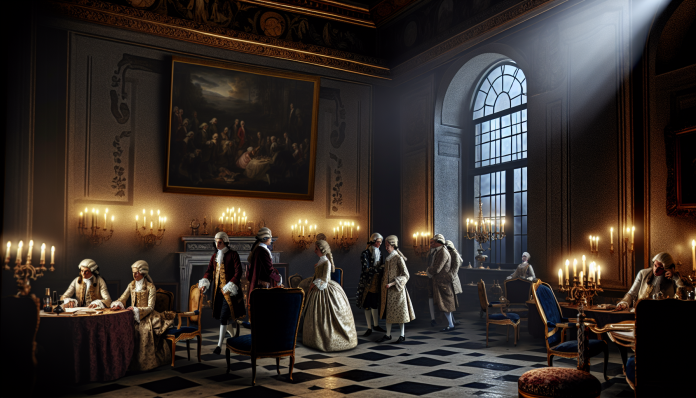The Forbidden Passions of Denmark’s Mad King Christian VII
A Royal Scandal Shakes the Danish Crown
In the 18th century, Denmark was a land steeped in strict societal norms and rigid hierarchies, governed by a monarchy that often found itself at odds with the changing tides of contemporary values. At the heart of this tumultuous period was King Christian VII, a monarch whose reign between 1766 and 1808 was marked by personal instability and political strife. Often regarded as the “Mad King,” Christian VII’s life was embroiled in scandal—most notably his tumultuous relationship with his wife, Queen Caroline Matilda, and his supposed affair with the royal physician, Johann Friedrich Struensee. This scandal became a defining moment in Danish history, not just for its personal ramifications but also for its broader impact on the monarchy and the prevailing moral attitudes of the time.
Closer to the Scandal
The particulars of this scandal were certainly scandalous for the conservative society of 18th-century Denmark. Christian VII, struggling with mental illness and personal instability, relied heavily on Struensee, who quickly gained political power and influence. Rumors began to swirl regarding an alleged affair between Struensee and Caroline Matilda, the young queen who had married Christian at just 15 years old.
The affair became a focal point for the discontent within the court. Whispers turned to accusations after they were spotted together in intimate settings. The duo’s liberal policies clashed with conservative values, raising tensions among nobles and the clergy. As the scandal escalated, Struensee was arrested in 1772 after a ‘palace coup’ orchestrated by envious rivals. The affair’s most scandalous aftermath occurred during the public trial. It was revealed that Caroline Matilda had posed in somewhat risqué portraits and had indulged in behaviors deemed inappropriate for a queen, leading to her exile.
As the nation peered into this royal soap opera, Danish society remained divided. Many viewed the scandal as a dangerous transgression against the sanctity of the monarchy, decrying both Struensee and Caroline Matilda as morally corrupt figures. “The malevolent providence of fate has brought us this calamity,” lamented the royal chronicler, echoing the prevailing sentiments of dismay and outrage.
Moral and Cultural Analysis: Then vs. Now
The fallout from the scandal was substantial. Struensee was executed without trial, a brutal reminder of the stakes involved in crossing royal boundaries. Caroline Matilda, unjustly embroiled in the scandalous web, was forcibly separated from her children and exiled to England, highlighting the severe consequences of her sexual freedoms in an era rife with patriarchal control.
Today, such a scandal would likely be perceived through a vastly different lens. In modern society, debates around public figures’ sexuality and personal relationships are often framed in discussions of consent, autonomy, and human rights. The romantic entanglements of public figures tend to attract more curiosity than scorn, with a focus on individual choices and less on collective morality. The cultural dialogue would include discussions about mental health, shifting gender dynamics, and the complexities of power in relationships, placing less blame on the female figure and her agency within the confines of abusive system.
A World Transformed by Scandals
In retrospect, the saga of King Christian VII and his court offers a compelling glimpse into a society grappling with its moral compass. While the scandal led to immediate consequences for its key players, it also paved the way for broader changes in Danish society, eventually contributing to the decline of absolute monarchy. The ignominious fate of Struensee and Caroline Matilda serves as a poignant reminder of how love, lust, and power often dance in a fine line marked by societal acceptance. The contradictions between then and now challenge how we view scandals and the human experiences behind them, impacting our understanding of history and culture.

